- Administrator
- Albums and Singles
One of the most intriguing artists on the Hospital Productions roster, Lussuria came to prominence with the release of three tapes as part of the American Babylon series in 2012 which were eventually compiled into a double vinyl edition last year. His opiated atmospheres brought together the ritualistic appeal of late '70s and early '80s Italian industrial music crossed with the claustrophobia of early material from The Cure and the decadent, voyeuristic compulsion of Pasolini flicks so enamoured by Coil.
Having been in the works through late 2013 and in post-production for several months since, Industriale Illuminato is in some respects the first release by Lussuria conceived as a standalone album, and is perhaps his most unique, unsettling body of work to date. Inspired by Deconstructionism and an overriding sense of anxiety, the album revolves around the dislocated narrative of album opener "Boneblack," a dense and evocative fade into shadowy realms inspired by composer Giacinto Scelsi and the enigmatic mind-tricks of Alain Resnais' Last Year at Marienbad.
More information can be found here.
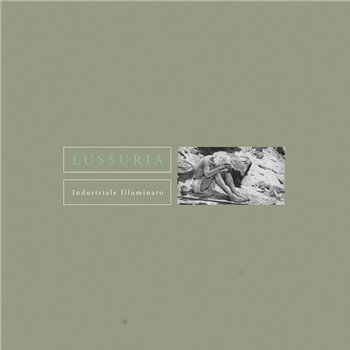
Read More
- Administrator
- Albums and Singles
Following up from the success of his emphatic PAN releases Dutch Tvashar Plumes and Diversions 1994-1996 in 2012, we are excited to announce ‘KOCH’ (pronounced "cotch"), the new album from London's Lee Gamble.
Sharing some stylistic affinity with his previous records, which excavated his deeply personal history with UK jungle and rave, and techno, this new work dives even deeper to reveal a singular and intimate musical vantage point, shifting to approaching music as projection, state, hallucination, an other place. In Koch, we experience an artist constructing a future after time spent deconstructing the past.
In the music we witness such dimensional abstraction, zooming between epic macro scenery and claustrophobically close detail, disorientation and absolute focus. Rhythms fuse together and phase apart, club tracks tunnel into an anxious wilderness, with themes and textures emerging as threads throughout the record, wormholing between each track.
There is a sense of the seen and the unseen, an honest tension between music as function (for this world) and as artistic exploration (for another world) as cracks in the surface appear to reveal the odd and alien minutiae within. Koch represents an intimate and revelatory new phase in Lee Gamble's practice. Producing tracks that can live and grow on their own in a club or personal listening environment, the artist's exploratory framework creates threads of consistency and tension between disparate spaces, locations, and mental states.
More information can be found here.

Read More
- Administrator
- Albums and Singles
The culmination of four years writing and editing, Anjou marks the first collaboration between Labradford's Robert Donne and Mark Nelson since the release of that group's fixed:context LP.
Combining modular synthesis, Max/MSP programming and live instrumentation, Anjou deftly weaves noise with gentle ambience and melody with texture.
Guitar, bass and Steven Hess' (Locrian, Fennesz, Pan American) live percussion give the eight pieces an immediacy and create a framework for the more abstract sounds of digital and analog synth programming.
The product of twenty-plus years of friendship, Anjou is refined and challenging.
An extension of the Labradford sound-world but no mere victory lap, Anjou represents Donne and Nelson stepping out and forward, their eyes firmly focusing on the future.
More information can be found here.

Read More
- Administrator
- Albums and Singles

The creatures who frolic in the Chemical Playschool have again escaped their test-tubes, and hell, this time they have gone too damn far...
Recorded from May through July 2014 at The Dolls' House, London and The Silver Studio in Nijmegen. Mastered by Ray.
Edward Ka-Spel, The Silverman, Erik Drost., Raymond Steeg...Cover Art by Anita Hammer.
More information can be found here.
Read More
- Administrator
- Albums and Singles

"I've known Nathan for many years and we've played shows and made records together, so I know his thing - hushed, reaching vocals weaving an often melancholic impression over sparse guitar and ambient backdrop. As the opening song ("Reinforced/Delicate") stumbles in, carrying that familiar weight, I thought I knew what was coming, but I was wrong. By the first two lines of "Into the Night", the second song, I had to sit down because if the rest of the record was going to be like this, I knew I wanted to be there with it. To my delight, it did not let up - every song a relentless epiphany, the ragged edge of emotional, even physical, abandon. Timeless songs like "My Favorite Drug is Sleep" and "I was Once a Handsome Man" careen into the more artful/obtuse textures even thru the sprawling electric tribute of "Ride on, Molina." This is what happens when someone with a truly unique vision sticks to their guns and proves it."
- Alan Sparhawk, Low
Out September 23rd. More information can be found here.
Read More
- Administrator
- Albums and Singles
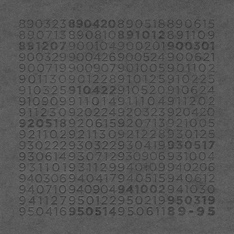 Between 1989 and 1995, Rudolf Eb.er (Runzelstirn & Gurgelstock) and Joke Lanz (Sudden Infant) had a monthly radio show for Switzerland’s 104.5 FM station. Titled Psychic Rally Transmission, each show was an improvised live performance, mixing found tapes, random household instruments and other items, that helped to define the then-nascent Schimpfluch-Gruppe. Aggressive industrial, punky outbursts, and a healthy dose of absurdity pepper the ten complete shows presented in this box.
Between 1989 and 1995, Rudolf Eb.er (Runzelstirn & Gurgelstock) and Joke Lanz (Sudden Infant) had a monthly radio show for Switzerland’s 104.5 FM station. Titled Psychic Rally Transmission, each show was an improvised live performance, mixing found tapes, random household instruments and other items, that helped to define the then-nascent Schimpfluch-Gruppe. Aggressive industrial, punky outbursts, and a healthy dose of absurdity pepper the ten complete shows presented in this box.
The duo's penchant for Dada inspired absurdity is what makes up the core of Psychic Rally Transmission.Right from the animal like noises and a questionable karaoke performance of Air Supply’s "The One That You Love" that open the first show, it was clear that the mood was going to be more bizarre than intense.Tapes of random discussions, TV show advertisements and phone calls spring up throughout, keeping the material extremely chaotic.Some of the shows do show a sort of theme or commonality within them, but even in those, the duo barely sit still.
With each single show clocking in at 60-75 minutes and taking up a whole disc each, there is quite a bit of material to listen through, material that at times is intentionally grating and challenging.Tape loops that go on too long, intentionally painful feedback and so forth make for difficult listening.However, it is one of those situations where the warts add greatly to the whole package.
Being a radio show, the duo occasionally play records from other artists, albeit with a significant amount of effects and processing.Early Whitehouse and Public Image Ltd.'s "Cowboy Song" end up represented, and an abridged playing of Genocide Organ's "Mind Control," paired with chintzy dance beats, works brilliantly.Random bits of German drinking songs, kids music, and some folk stuff all show up at some point, the last three shows especially showcasing a lot of the beer hall material.
Less discernible music also springs up throughout, and given its ragged, lo-fi sound, I assume a lot of it may be Lanz or Eb.er’s own work in studio or via pre-recorded cassettes.Punk rock outbursts from the March 1 1990 show instantly made me think of when Sudden Infant have gone in that direction, and the improvised percussion and guttural sounds from May 18 1992’s show are all R&G's organic body horror collage.
The in-studio performances range from standard harsh noise elements, such as the feedback and drones of April 22 1991's show, which is perhaps the most focused single disc here.Tapes and random effects spring up, but on the whole it stays a consistent harsh noise work.On May 17, 1993, cheap electronic noises and beat boxes eventually give way to distorted, harsh industrial rhythms that is no more pleasant in a conventional sense, but extremely enjoyable.
Ten hours of cut up tapes, weird found music, and studio improvised noise recordings ensure this set may not be the most accessible package.However, the material contained within are perfect examples of the material the members of the loosely defined Schimpfluch-Gruppe have been releasing over the past 25 plus years.Anyone who is familiar with Lanz and Eb.er's work will find much to love on here, in a format that benefits from its mostly unedited and spontaneous nature.
samples:
 
Read More
- Administrator
- Albums and Singles
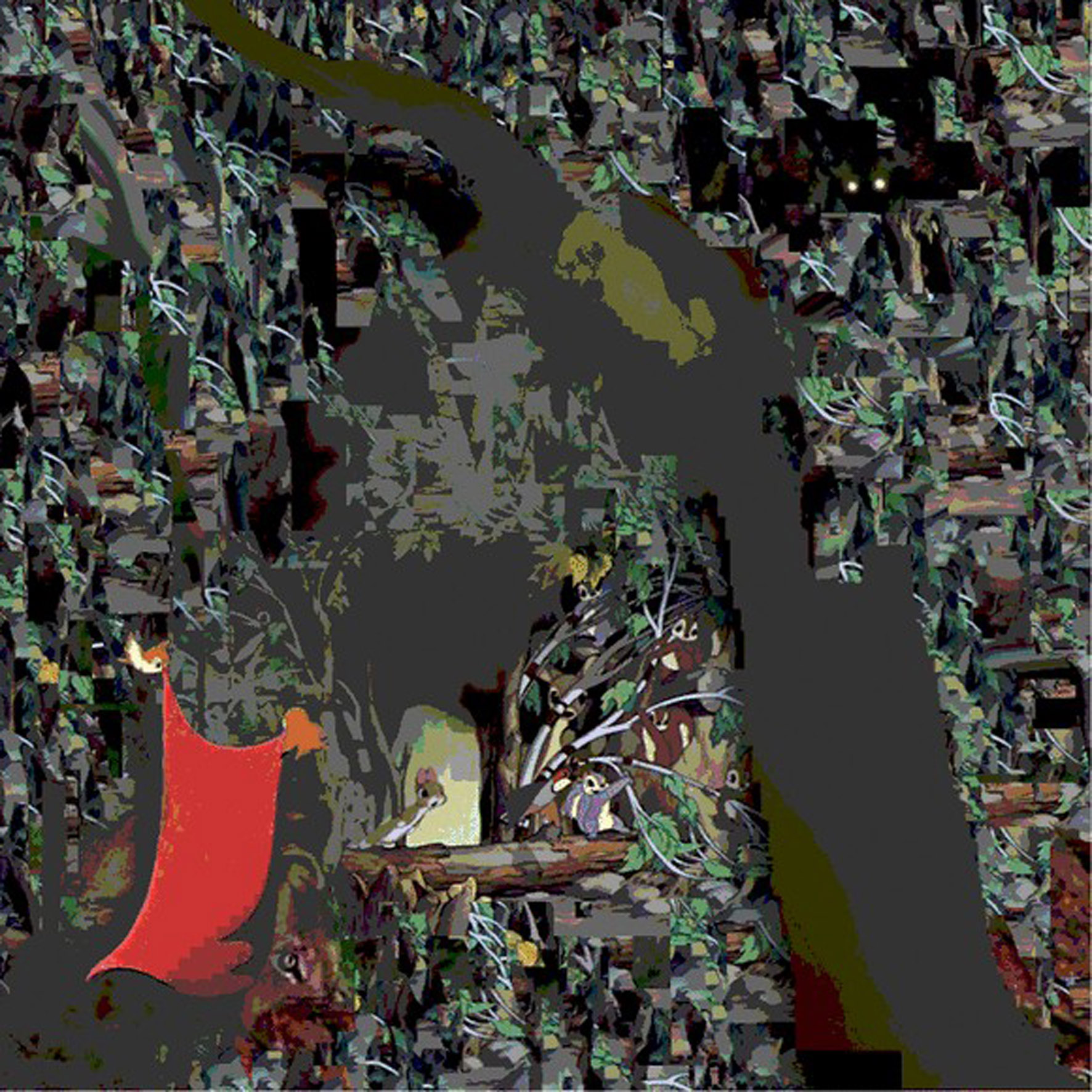 This is the debut effort from the duo of Ensemble Economique's tirelessly prolific Brian Pyle and Je Suis Le Petit Chevalier's Félicia Atkinson and it is a great one.  Consisting of two very different long-form pieces, Naked Island offers up a beguiling and hallucinatory mélange of breathy spoken word, dreamy synth drones, clattering percussion workouts, blown-out shoegaze bliss, and spacey abstraction.
This is the debut effort from the duo of Ensemble Economique's tirelessly prolific Brian Pyle and Je Suis Le Petit Chevalier's Félicia Atkinson and it is a great one.  Consisting of two very different long-form pieces, Naked Island offers up a beguiling and hallucinatory mélange of breathy spoken word, dreamy synth drones, clattering percussion workouts, blown-out shoegaze bliss, and spacey abstraction.
The first side of this record is consumed by the ambitiously titled "Deep, Transcendent Waves of Golden Light," which opens in a dreamlike reverie, as Atkinson whispers in French over a bed of retro-futurist synth drones.  Gradually, however, a muted techno thump fades in and the piece begins to cohere into something more structured and propulsive.  In a general sense, "Waves" has a lot in common with Pyle's recent Ensemble Economique work, as the sizzling, spacey swells are soon bolstered by lush, Romantic, and goth-y synth chords, hallucinatory studio tweaking, and some buried, yet tormented, guitar-like moans.  As much as I enjoy all of that stuff normally, it is presented in a much more effective way on this album than it has been on some of Pyle's solo works.  I have no idea if Atkinson is responsible for the wise addition of the lively, thumping pulse, but her sensuous vocals are most definitely a welcome addition to Pyle's bleary, melancholy strain of psychedelia.
The album's second side is similarly excellent, as "Play it as it Lays" is built upon a wonderfully clattering and dynamic drum beat that is a strong enough hook to carry the entire piece by itself.  Perhaps realizing this, Brian and Félicia opted for far more amorphous/vaporous musical accompaniment this time around, dispensing with words or any kind of prominent chord progression.  Instead, the duo embellish their rolling percussion with a shifting organ drone, hazy swells of wordless vocals, and a shimmering nimbus of peripheral mindfuckery.  Gradually, however, the drums are overtaken by the accumulating washes of burbling and shimmering synths and floating vocals, leading to a lovely and vibrant coda of shapeless, oceanic bliss and buried, roiling noise.
The sole criticism that I can muster is that Naked Island sounds a lot more like a great Ensemble Economique album than something completely new and different, though I am perfectly fine with that state of affairs.  Aside from her vocals on "Deep, Transcendent Waves," it is difficult to tell exactly where Atkinson's influence manifests itself, as her solo work is primarily a somewhat chameleonic strain of layered, phantasmagoric experimentalism.  It is probably safe to say that her presence is responsible for the heightened druggy weirdness swirling around the more structured bits, but whatever she did seems to have brought out the best in both her and Pyle.  For one, both pieces are beautifully constructed compositions that maintain a pleasant momentum and achieve a satisfying dynamic arc.  Secondly, this album is an unusually warm and human one, as far as fringe-y abstract experimentalism goes.  I am not sure if I would state that Naked Island is definitely a career zenith for either Pyle or Atkinson, but a strong case could certainly be made, as this is an absolutely essential release for fans of either.
(Note: I would be remiss if I did not also point out that this record has very cool lenticular cover art.)
- Deep, Transcendent Waves of Golden Light
- Play it as it Lays (excerpt 1)
- Play it as it Lays (excerpt 2)
 
 
Read More
- Administrator
- Albums and Singles
 This is an unusual duo with an unusual pedigree, as Zeigler is a Philadelphia engineer best known for working with artists like Kurt Vile and The War on Drugs, while Lattimore is a harpist who has worked with all kinds of interesting folks in the past, ranging from Jarvis Cocker to Wrekmeister Harmonies.  Together, they create something that would have been perfectly at home on 2013's fascinating I Am The Center compilation…almost.  While Lattimore's rippling harp weaves a gently hallucinatory and dreamlike spell that veers close to both New Age and chamber music at times, Zeigler's well-placed guitar and synth coloration gives these four pieces a welcome heft and unpredictability.  Admittedly, the balance between pastoral and avant garde is not always quite optimal, but this is nevertheless a strong and distinctive debut.
This is an unusual duo with an unusual pedigree, as Zeigler is a Philadelphia engineer best known for working with artists like Kurt Vile and The War on Drugs, while Lattimore is a harpist who has worked with all kinds of interesting folks in the past, ranging from Jarvis Cocker to Wrekmeister Harmonies.  Together, they create something that would have been perfectly at home on 2013's fascinating I Am The Center compilation…almost.  While Lattimore's rippling harp weaves a gently hallucinatory and dreamlike spell that veers close to both New Age and chamber music at times, Zeigler's well-placed guitar and synth coloration gives these four pieces a welcome heft and unpredictability.  Admittedly, the balance between pastoral and avant garde is not always quite optimal, but this is nevertheless a strong and distinctive debut.
Slant of Light opens with the lovely, harp-driven "Welsh Corgis in the Snow," which unfolds a gently melancholy melody of plucked arpeggios.  Zeigler, for his part, sticks to something of a background role for "Corgis," but handles it beautifully, embellishing Lattimore's rippling harp with woozy, shimmering swells of synth or heavily treated guitar.  On the following "White Balloon," however, it is Jeff who steers the piece with a neo-classical sounding arpeggio progression of his own, though Lattimore's plucked melody organically weaves in and out of it nicely.  At times it verges a bit too close to "pastoral" for my taste, but Zeigler narrowly keeps things from becoming too polite with a subtle backdrop of electronic noise and whooshing atmospherics.
The album's second half leads off with "Echo Sounder," the first piece that sounds like it actually began collaboratively, as its bleary, gently warped ambience unfolds in a languorously meandering fashion that strongly suggests improvisation.  I hesitate to use the word "purposeless" to describe it, as that would sound too negative, but it is the sort of piece that just pleasantly hangs in the air and quavers pleasantly rather than sets off towards a planned destination.  While it lacks much of the melody or momentum that carried the album's first half, its hazy, twinkling reverie is very likable in its own right.
The closing "Tomorrow is a Million" is similarly divergent from Slant’s more composed opening pieces, though it takes things in a much more unpredictable and experimental direction than I had anticipated. It begins innocently enough, though Lattimore's rapidly plucked arpeggios are a bit darker and more unstable-sounding than they were previously.  Zeigler, however, is quite intent on dragging the piece into far deeper, stranger waters, gradually escalating from ghostly whines, scrapes, and echoing noises to a scary, noisy industrial-sounding crescendo.  It is certainly not nearly as easy on the ears as the rest of the album, nor is it entirely successful, but it is nevertheless Slant of Light's most compelling and unique piece as well as its most convincing raison d’être.  Rather than sounding like either a Mary Lattimore piece or collaborative improvisation, "Tomorrow" sounds like a Mary Lattimore piece that has been torn and stretched into something bizarre and largely unrecognizable.  That is an unexpected and impressive achievement, though the sped-up early Tangerine Dream-style synth at the end sounds a bit deranged and misplaced.
It is difficult to say whether Slant of Light has any real flaws, as it feels like Mary and Jeff had fairly modest ambitions for this effort and delivered a uniformly likable batch of songs: for the most part, this sounds exactly like two kindred spirits getting together to make some enjoyable and interesting music.  I suppose there is a lack of a clear, unified vision and "Tomorrow" hints at a potentially more adventurous, unusual, and significant album that could have been, but such things take time.  I need to have more reasonable expectations for debut albums, I guess–for all its minor quirks and unevenness, Slant of Light is still dramatically better and more instantly gratifying than most instrumental efforts that cross my path.
 
Read More
- Administrator
- Albums and Singles
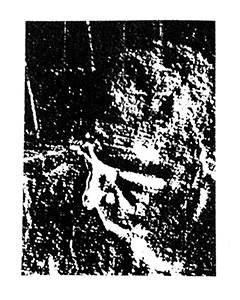 Respectfully revisiting the early sounds defined the second wave of industrial, the one associated with the likes of Skinny Puppy and KMFDM, this Texas duo’s penchant for vintage sounds and minimalist structures definitely show their influences. The songs merge together into a delightfully gray, meandering bit of rhythmic industrial music that is tastefully understated but never dull.
Respectfully revisiting the early sounds defined the second wave of industrial, the one associated with the likes of Skinny Puppy and KMFDM, this Texas duo’s penchant for vintage sounds and minimalist structures definitely show their influences. The songs merge together into a delightfully gray, meandering bit of rhythmic industrial music that is tastefully understated but never dull.
The first half of this tape is the one that has the rougher approach, mixing simple sequences and drum machine programs that plod along (in a good way), lingering long enough to blend together hypnotically, but never so long as to become boring or monotonous."Restricted Area," for example, has the duo sticking to a bass synth led structure, mixed with thick, heavy beats.It does not diverge much from this arrangement, but stays engaging throughout its three and a half minute duration.
The major touchstones of Corporate Park's influences are never too oblique:their penchant for cheap, tight springy reverbs instantly reminded me of Esplendor Geometrico but with significantly distortion, and on "Too Expensive to Live," a far more relaxed, calm demeanor compared to EG’s relentless, pummeling electronic assault.
"Pillow Talk" emphasizes on the same sort of production, but with its diverse array of sounds and oddly processed vocals, I felt more of a kinship with the earliest Skinny Puppy demos from Back and Forth, conjuring the same bleakness and lurking menace."Pundit Mantra" might be shrouded in distortion that makes it sound very much of the genre, yet not specifically reminiscent of any one artist, with the added multi-layered dialog samples expanding that vintage 1980s feel.
On the final two songs, the duo diversifies their approach a bit more."Mise En Abyme" is built upon more conventional drum sounds and programming, with the remainder largely made up of pulsing bass synth and random bleeps and synth chirps.Structurally repetitive, the addition of heavily processed and muffled vocals that are treated enough to sound human, but remain largely indecipherable make it memorable.The short closing "Firmament" features a simple, almost naked sounding drum machine with expansive, droning synths, resulting in a more ambient work.At just a hair over two minutes, it ends up expansive piece compared to the tighter, more rhythmic focused ones, and it works great as an ending.
I know this resurgence in early industrial/EBM smacks of a trend, and based on the number of reviews I have written in the past couple years mentioning this, it is obviously one that I am fully on board with.The influences that shine through heavily with the likes of Corporate Park (and High-Functioning Flesh and Pure Ground, amongst others) are ones that date back to my formative years of pursuing more unconventional music, and thus I will always have an affinity for them.Maybe I have just been lucky, but as of now I have not encountered any projects that have turned me off from this resurgence, and Corporate Park continues that trend of mixing quality and familiarity.
samples:
 
Read More
- Administrator
- Albums and Singles
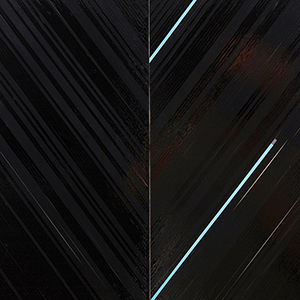 As Terence Hannum's primary project Locrian continues its transition from a small drone project to a more diverse and recognizable behemoth on a large label, recording in major studios, Via Negativa thematically functions as a "remembering his roots" record. Recorded alone in his basement studio, the DIY ethos of his early days is obviously present, but the music is as professional as it comes.
As Terence Hannum's primary project Locrian continues its transition from a small drone project to a more diverse and recognizable behemoth on a large label, recording in major studios, Via Negativa thematically functions as a "remembering his roots" record. Recorded alone in his basement studio, the DIY ethos of his early days is obviously present, but the music is as professional as it comes.
This "look back" concept has been a part of Hannum's visual work as of late as well, some of which adorns the gatefold of this LP.The patterns and images created from cutting up magnetic cassette tape is surely no accident:Hannum and I are the same age, and I can only assume it is a conscious effort to revisit the de facto audio format of his youth.
In the same way, the three pieces that make up this album (with a fourth digital bonus one that would not fit on the LP) follow the same theme.Retreating to his basement with synth collection in tow, the sound of this record is unsurprisingly reminiscent of parts of Locrian proper.It works like the distillation of the keyboard heavy progressive rock tendencies of that band, one that has never shied away from name checking early Genesis and King Crimson in their influences.Also, I cannot help but visualize Hannum standing behind his racks of gear, complete with a homemade gold lamé cape to fully channel his inner Rick Wakeman.
The lead piece, "Become More, Become Less" (undoubtedly another variation on the album’s theme) introduces the album with an appropriate darkness.Spooky electronic noises and deep bass mix with Hannum's monastic chanting, his voice acting as an additional instrument than vocals in the traditional sense.The intentional dark and creepy vibe is fitting, and the piece ends with a tasteful elongated synth drone.
The mood and tone varies by the time "If Only You Knew What Darkness I am Plunged Into" comes around.Retaining the deep bass with shimmering keyboard waves, I was reminded of the electronic score to Apocalypse Now and hints of John Carpenter’s classic 1980s soundtracks.Minimalism and repetition feature heavy throughout its near 16 minutes, but the subtle variations and use of vocals result in a minimalism that is clearly artistic direction and not laziness by any means.
"Unapproachable Light," on the other side of the record, has a most befitting title.Working with heavy church organ passages and rich, complex surges of sound, a holy music vibe is prominent throughout the piece, akin to Arvo Pärt loading up on electronics rather than writing classical-focused compositions.The digital-only "The Ideal Forms" comes off as an extension of this.More immediate in its intensity, the mix of subtlety and monolithic walls of sound is powerful, and builds to a dramatic conclusion.
Hannum's influences shine through clearly on Via Negativa, a throwback album that manages to not at all bask in self-importance or pretense.Locrian have not hit that Spinal Tap-esque misdirection that often precedes a release of this nature, nor do I think things will take that turn for the trio.Instead, it is strong work that does what a good solo album should, namely showcase the individual's contributions to a band, and take that in directions that may not fit in the main project.
samples:
 
Read More
- Duncan Edwards
- Albums and Singles
 Ziguri's debut album, produced by Schneider TM, blends smooth and powerful motorik monotony, babbling vocals, and also dares to set Thomas Pynchon lyrics to music.
Ziguri's debut album, produced by Schneider TM, blends smooth and powerful motorik monotony, babbling vocals, and also dares to set Thomas Pynchon lyrics to music.
In 1987, Günter Schickert, Udo Erdenreich and Dieter Kölsch, from the Berlin theater 100Fleck, formed Ziguri Ego Zoo, a musical theater project which soon became the group Ziguri. They played together until 1997 but the trio reformed in 2011 and their close understanding is the key factor in the success of this recording. Another is Günter Schickert, a well known innovator of hypnotic and psychedelic music. He and Manuel Göttsching are among the figures pioneering the use of echo guitar and his solo albums Samtvogel (1974) and Überfällig (1979) are revered cult classics.
The opening piece, "General Klickman," begins with an aggressive, garagey riff to build a raw tension, evolves into a slower and more medieval-sounding sombreness, and then repeats. The five tracks mainly consist of passages of driving drumbeats and bass lines, over which floats Schickert's trancey guitar. Here and there, short bursts of speed-gibberish chant match the urban-tribal atmosphere of the music.
Stuck splendidly in the middle of this album is "Yoyodyne," a daring manifestation of Pynchon's spoof of brainwashed industrial devotion in the employee chant of the Yoyodyne corporation. Ziguri gets the balance between inane, bawdy, sinister, and paranoid, just right. Pynchon's experiences working as a technical writer at Boeing, in Seattle, inspired the fictional defense contractor Yoyodyne corporation in his books V. (1963) and The Crying of Lot 49 (1966). Well-named, too, since the "dyne" is the standard unit of force in the centimeter-gram-second system of units, derived from the Greek word dynamis, and hence real companies, such as Teledyne, Teradyne, and Rocketdyne (an aerospace company) have existed.
One theme of Pynchon's work is the concept of entropy, but almost thirty years since their formation Ziguri seem to fly in the face of that by still prospering and honing their sound, rather than decaying. I was a bit wary of a group named after the peyote cactus which contains mescaline, since drug use is duller to me than tupperware parties. Thankfully, Kölsch-Schickert-Erdenreich revels in a good kind of monotony. Or, to tweak the words of G.K.Chesterton: "monotony, either in its sensation or its infliction, is simply the quality of a person. There are no dreary sounds; there are only dreary sound hearers."
 
 
Read More

